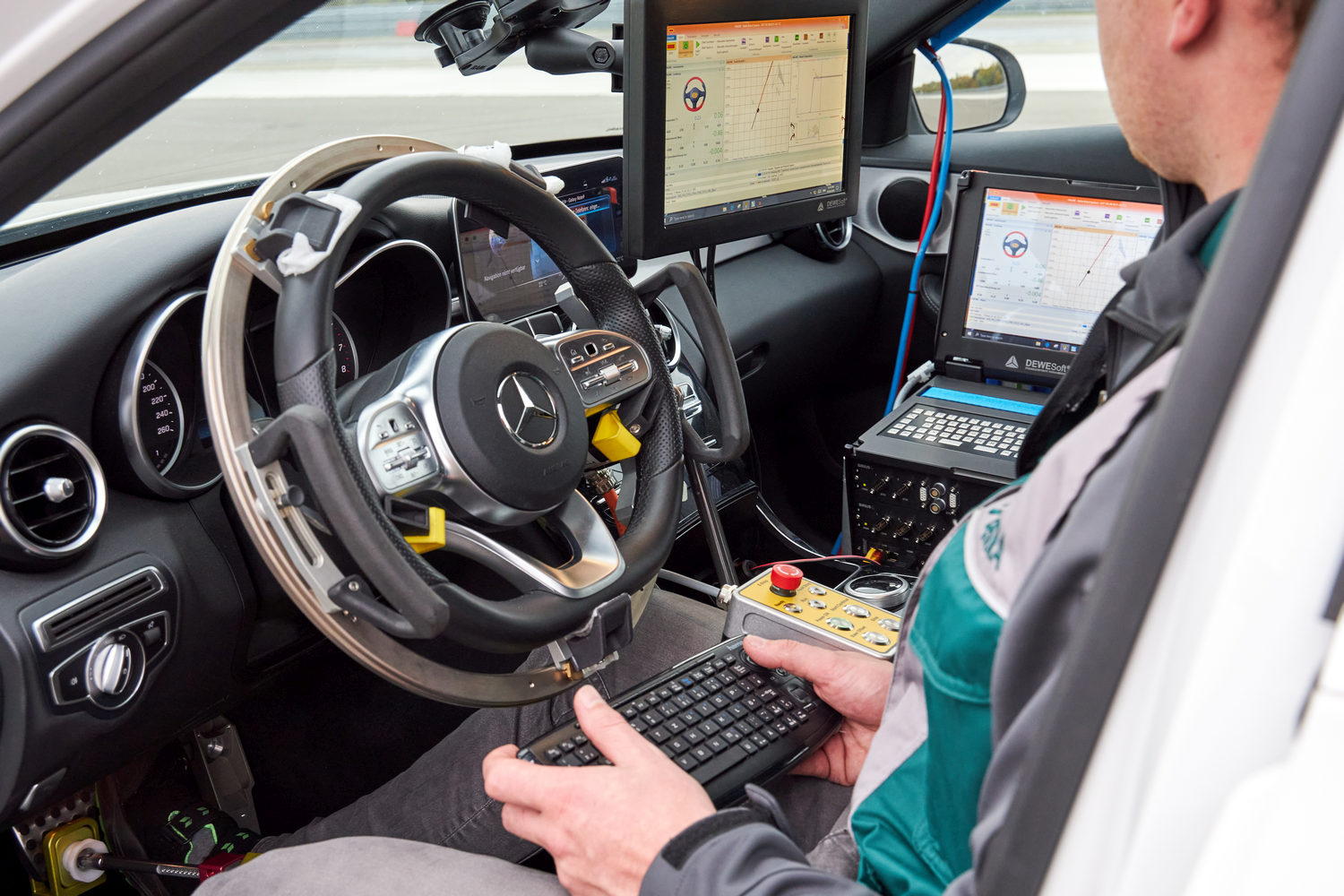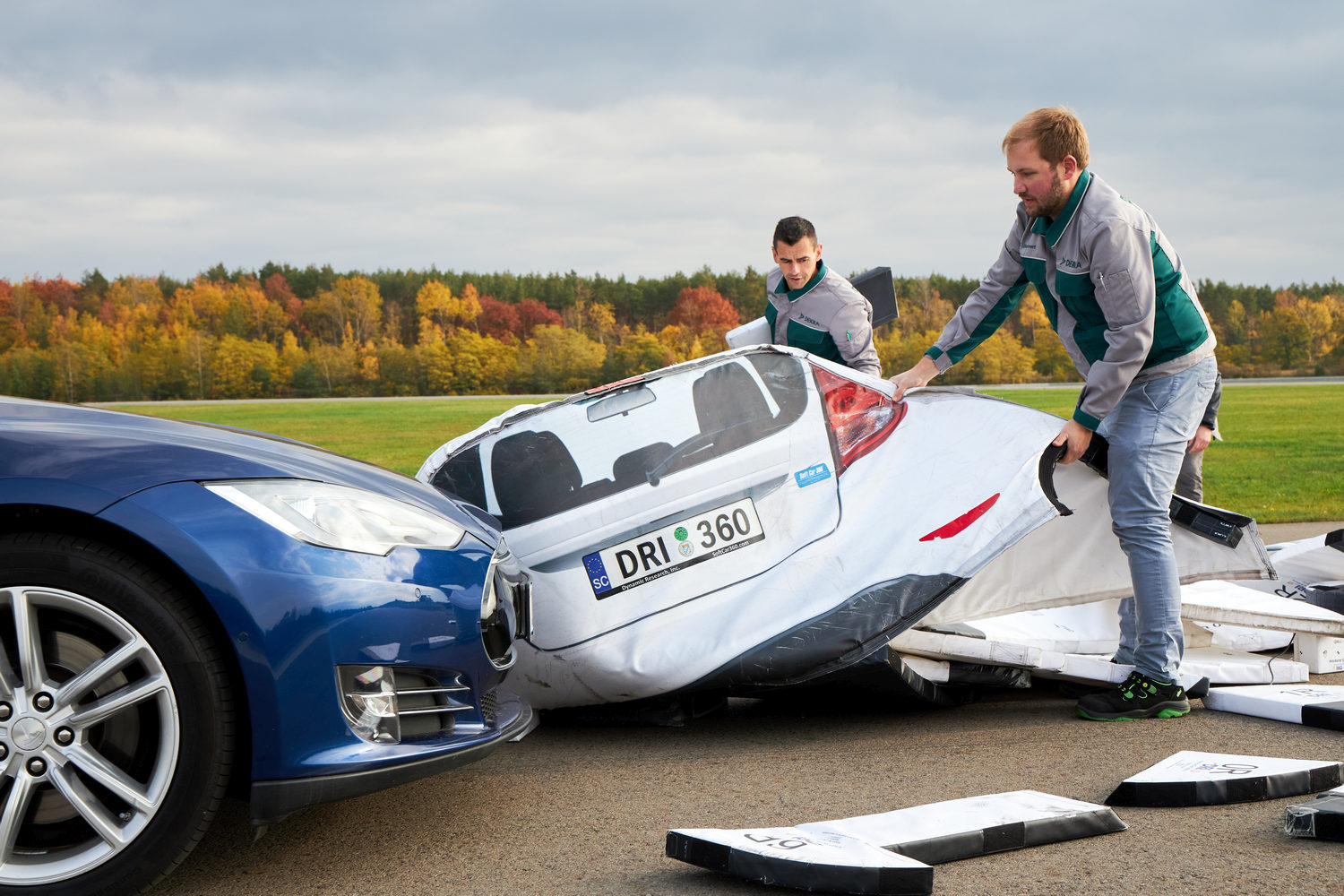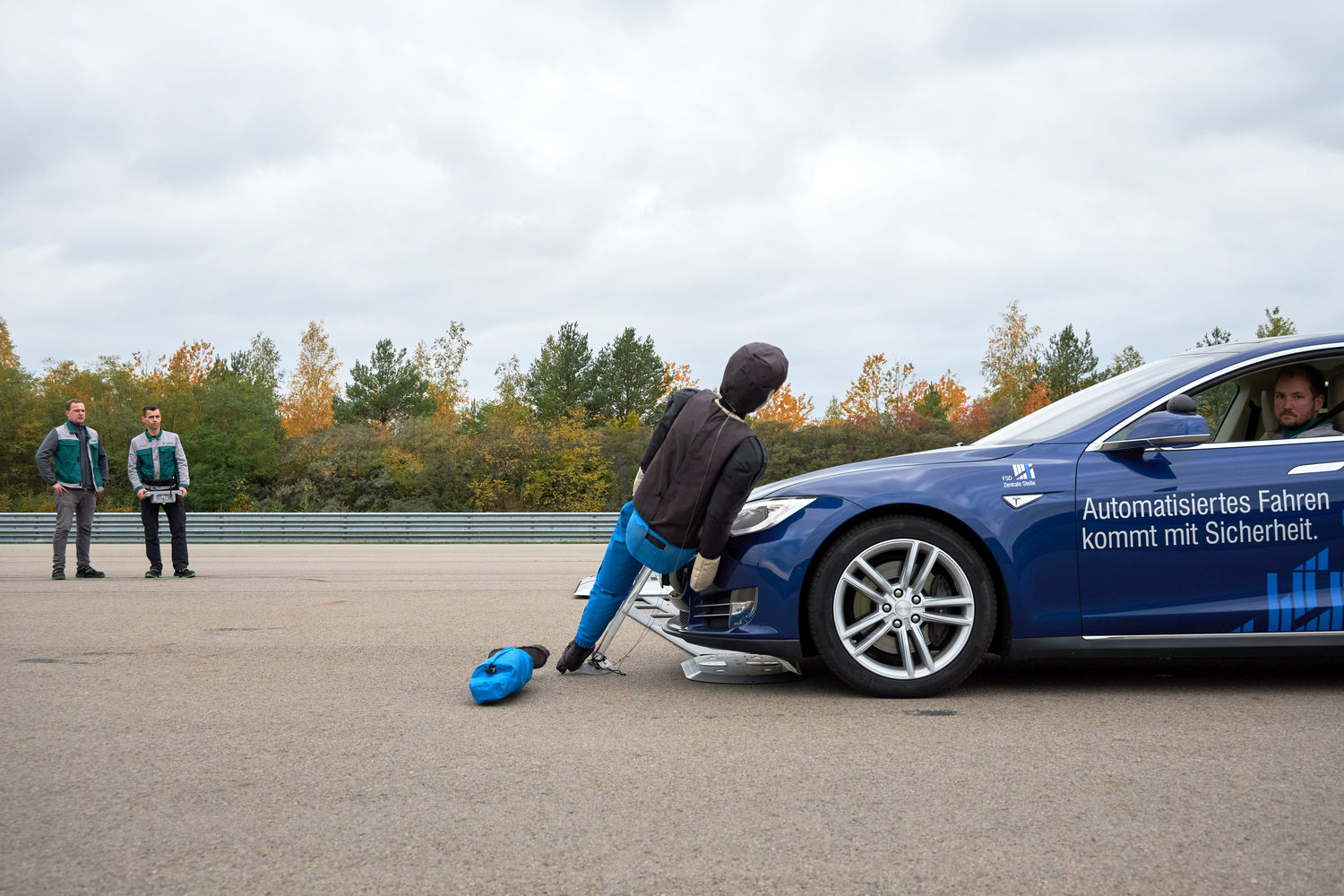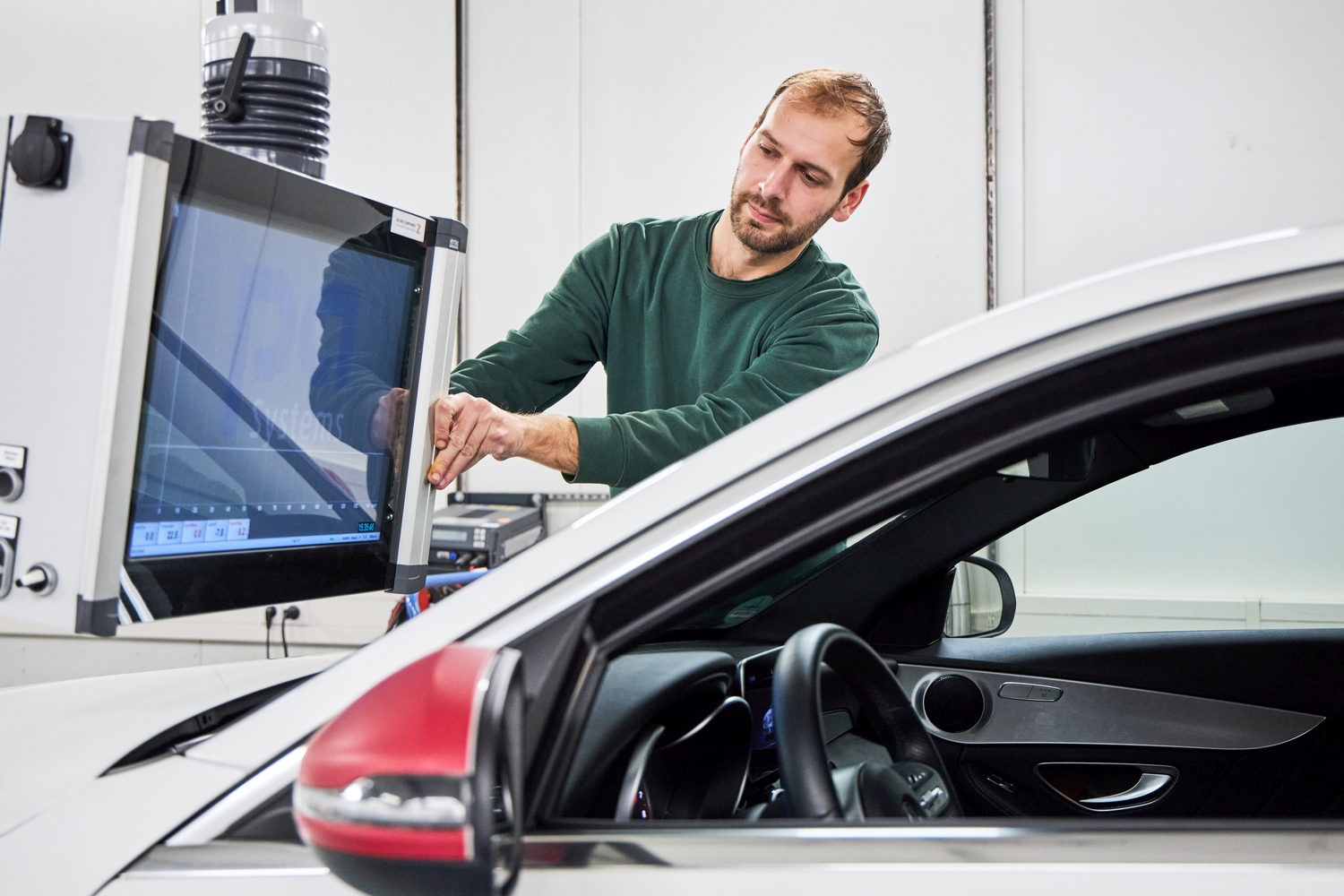Automated Driving: Between Wish and Reality
Author: Joachim Geiger
Behind the scenes, car manufacturers and suppliers are hard at work on algorithms for fully automated driving functions. However, only elaborate test programs can clarify how vehicles will behave when using said functions. The experts at the Lausitzring racetrack’s DEKRA Technology Center know all about the latest developments. We asked about the current state of the technology.
Dream and reality tend to diverge when it comes to road traffic law. Are drivers allowed to write an e-mail while driving on the highway? Can they read the newspaper? Calm the children in the back seat? The law allows it in Germany for example – as long as the vehicle is approved for level 3 automated driving and the driving speed doesn’t exceed 60 kilometers per hour. But how many vehicles in this country actually fulfill these conditions? The reality is sobering, as evidenced by the German government’s April 14, 2021 report on the evaluation of automated driving regulations. For example, there are no vehicles registered at a higher level in Germany, nor have authorities received applications for type approvals.
In this context, the federal government is already going one step further with the new “Law on Autonomous Driving”. In future, vehicles could be driving fully automated in a previously approved operating range – for example, in scheduled passenger shuttle services or freight transport on the first or last mile (level 4). In that case, a human driver’s presence is no longer necessary. Instead, a technical supervisor would take over when the on-board computer gets stuck. “The law is primarily aimed at public transport and logistics. These regulations aren’t feasible for private transport,” says André Skupin, Head of the Basic Principles and Processes Department at DEKRA Automobil.
Catching up on permits for vehicle testing in public spaces
Germany holds the lead worldwide for standardized approval of level 4 automated vehicles. However, in its “2020 Autonomous Vehicles Readiness Index”, the consulting firm KPMG found that the Germans have a lot of catching up to do in terms of the approval process for test drives with fully automated vehicles in public spaces. Countries such as China, South Korea, Singapore, and the USA are in a much better position.
So is Germany lagging behind in development? A study on fully automated buses in public transport, presented in June 2020 by the Frankfurt-based auditing firm Pricewaterhouse Coopers (PwC), lists around 40 projects in Germany, in which passenger shuttles operate fully automated and with safety drivers in scheduled services, at airports, and in industrial areas. However, most of them are operating on rather short routes of one or two kilometers and at speeds of up to 20 kilometers per hour.
People Mover in the “Absolut” project – a step towards fully automated driving?
So is the People Mover a flagbearer for fully automated driving? “That might be a bit far-fetched,” says Steffen Hladik, Head of the Vehicle Department at the DEKRA Technology Center (DTC) in Klettwitz. But a step in this direction could be the “Absolut” project of the Technical University of Dresden and the Leipziger Verkehrsbetriebe, which is set to run until the end of the year. The protagonists are two automated shuttles from French manufacturer Easymile, which provide space for a safety driver and 16 passengers. The small buses are able to travel at speeds of up to 70 kilometers per hour on a precisely defined seven-kilometer route between the BMW plant and the Leipzig Trade Fair Center. They detect obstacles in their lane and can independently determine whether the track width is sufficient to pass without switching to the oncoming lane. DEKRA has been supporting the “Absolut” project for a year and a half, and has prepared a track risk analysis and vehicle safety assessment together with the project partners.
State-of-the-art test facilities for automated driving at the Lausitzring
But the expert organization is also active on the threshold between assistance systems and highly automated systems. The DEKRA Lausitzring is a perfect test site for car manufacturers and suppliers to put vehicles and systems with automated and connected driving functions through their paces under safeguarded conditions. “Our services range from simulation and data collection, through reproducible driving tests on the proving grounds, all the way to safeguarding endurance runs in public road traffic,” explains Uwe Burckhardt, Head of Test and Event DEKRA Lausitzring. DEKRA collects high-quality data in thousands of precisely defined test setups, which developers use to improve their algorithms. A Lausitzring technological highlight is the approach to scenario-based testing, which focuses on the driving behavior of automated vehicles.

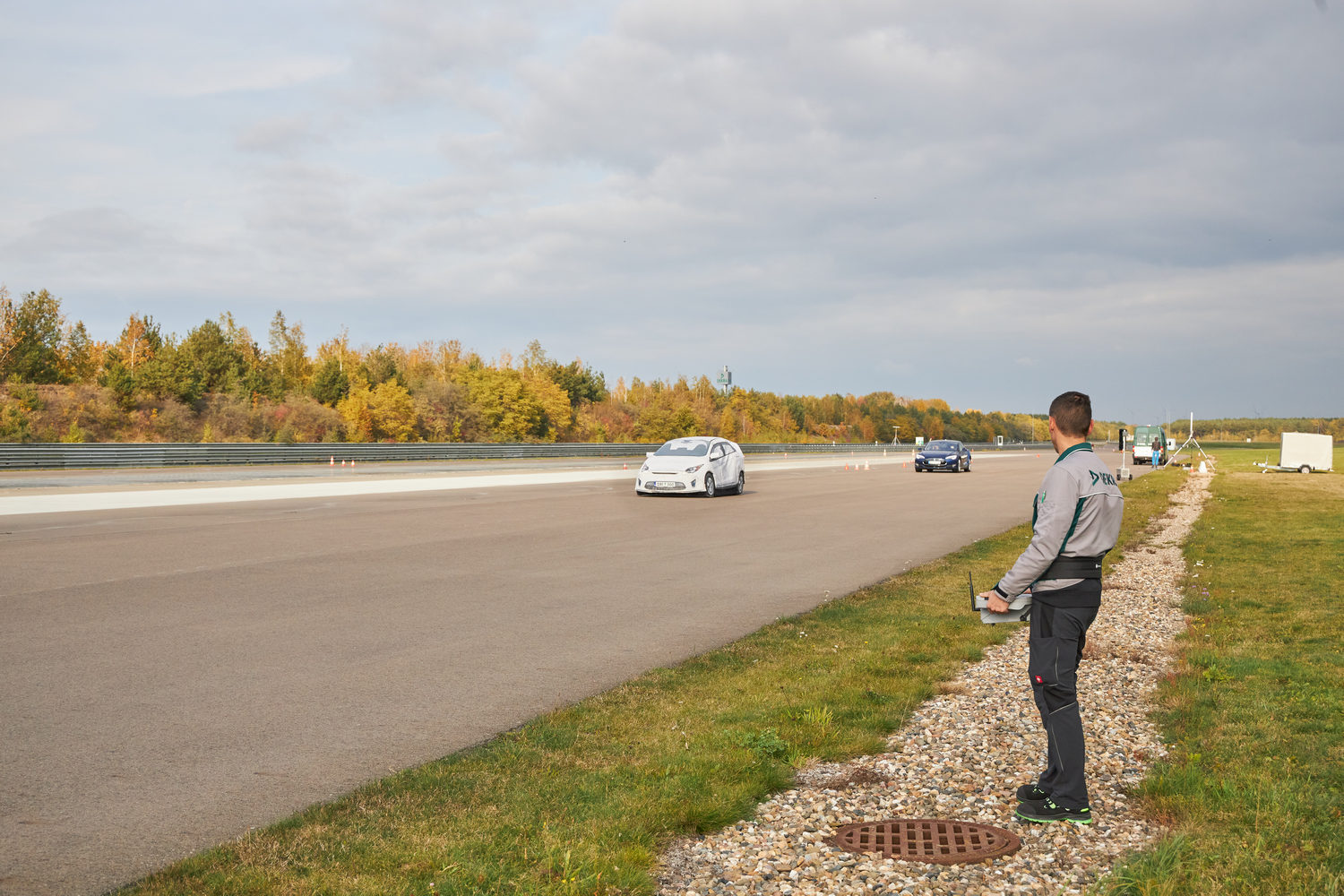
Experts orchestrate swarm tests in the control center with several vehicles
In these swarm tests, experts orchestrate the deployment of several test vehicles – including trucks and vans – in the control center via DEKRA’s own 5G network. Driving robots steer the vehicles with maximum precision in transverse and longitudinal directions across the entire speed range and move the vehicles in a swarm to the desired position, down to the last centimeter. The decisive advantage is that each scenario can be repeated under identical circumstances, which enables reliable validation of results. The test vehicles’ performance is very high, notes Uwe Burckhardt. In his opinion, however, it will probably be a while before private transport reaches level 4. In any case, DEKRA is keeping on top of further developments – as an accompanying test service provider for automotive clientele.
Interview: Three questions for Joachim Klink, Head of Autonomous Driving & Smart Mobility at T-Systems International
Mr. Klink, T-Systems has been supporting DEKRA in developing a concept for testing vehicles of future generations since the beginning of 2020. Why do we need to rethink the previous model?
Software in vehicles is increasingly being brought into focus when it comes to the evaluation of driving safety. In addition, vehicle software is changing with increasing frequency – even when vehicles have long been in the field. Tesla, for example, rolled out more than 150 vehicle software updates in 2020, about 30 percent of which have a potential impact on driving safety, according to our analysis.
What do you think of the design and tasks of a trust center?
Among other things, it’s intended to give testing organizations non-discriminatory access to data relevant to driving safety and the environment. Of course, it wouldn’t be practical to carry out a new type approval test after every software update. On the other hand, every software change involves risks because software is never error-free. It would be very beneficial to safety if an independent third party such as DEKRA were granted direct access to the code for random or occasion-based checks.
What requirements must the intended trust center meet in terms of data security?
We need to ensure that only authorized organizations have access to it. Another issue is the definition of roles and rights – in other words, when and how does who get access to which data. A rather theoretical danger is the manipulation of vehicle data. This doesn’t play a role for the trust center, however, as we take a “read-only” approach.
